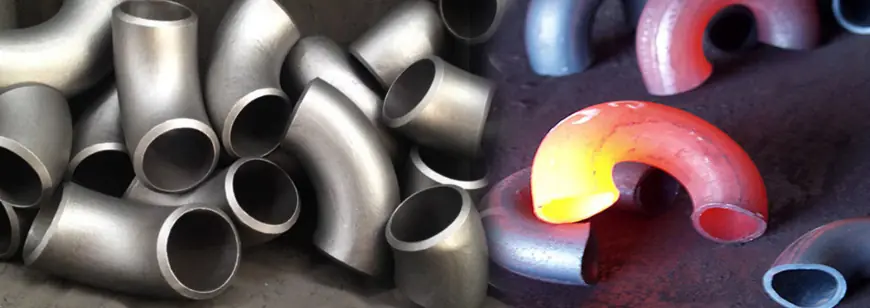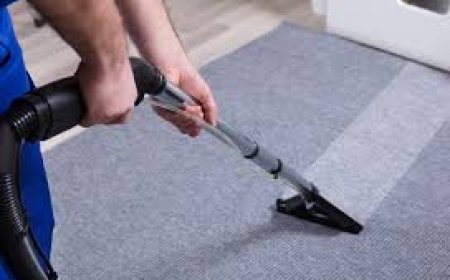The Manufacturing Process of SS 321 Buttweld Fittings
Learn how SS 321 Buttweld Fittings are made! Explore the key stages of manufacturing, including forming, welding, and rigorous quality checks.

SS 321 buttweld fittings production requires a series of precise steps to ensure their quality, strength, and performance in demanding applications. These fittings, made from titanium-stabilized stainless steel, undergo rigorous processes to meet industrial standards and perform reliably under high-temperature and corrosive conditions.
Step-by-Step Manufacturing Process
Raw Material Selection
Manufacturers begin by sourcing 321 billets or plates of high-quality stainless steel. The raw material must meet specific chemical composition standards, ensuring the alloy contains adequate titanium, chromium, and nickel for corrosion resistance and high-temperature stability.
Cutting and Shaping
The raw stainless steel is cut into required shapes and sizes using advanced cutting tools like plasma cutters or water jets. This step ensures that the material is prepared for further processing based on the type and dimensions of the manufactured buttweld fitting.
Heating and Forming
The material is subjected to heating to make it malleable for forming. Induction heaters or furnaces heat the stainless steel to a controlled temperature. Once heated, manufacturers use forming techniques like:
Hot Forming: Dies or presses mold the material into the desired shape, such as elbows, tees, or reducers. This technique is suitable for fittings with large diameters.
Cold Forming: At room temperature, hydraulic presses or rollers shape the material for smaller or more precise fittings.
Welding
In cases where fittings like tees or reducers require additional components, welding is used to join different sections of the material. The welding process ensures a secure and seamless bond that withstands high pressures and temperatures. Common methods include:
TIG Welding (Tungsten Inert Gas) for precision and clean welds.
MIG Welding (Metal Inert Gas) for faster production.
The welds undergo inspection to ensure they are free from defects like porosity or cracks.
Heat Treatment
After forming and welding, the SS 321 Buttweld Fittings undergo heat treatment processes such as annealing. This step relieves residual stresses, enhances strength, and improves the corrosion resistance of SS 321 fittings. The fittings are heated to a specific temperature and then cooled at a controlled rate to achieve the desired mechanical properties.
Surface Finishing
Pickling and Passivation
The fittings are treated with acid solutions to remove surface impurities, oxides, and scales formed during manufacturing. Passivation enhances the natural oxide layer on the surface, increasing corrosion resistance.
Polishing
Polishing machines or manual processes create a smooth surface finish on the fittings. This step improves the aesthetic appearance and reduces corrosion risk by eliminating surface roughness.
Quality Control and Testing
Dimensional Inspection
Manufacturers verify that the fittings conform to the specified dimensions and tolerances. Precision measuring tools, like calipers and micrometers, ensure accuracy.
Non-Destructive Testing (NDT)
Non-destructive testing methods evaluate the fittings' structural integrity without causing damage. Standard NDT methods include:
Ultrasonic Testing: Detects internal defects and inconsistencies.
Radiographic Testing: X-rays or gamma rays inspect welds and internal structures.
Pressure Testing
Hydrostatic or pneumatic pressure tests evaluate the fittings' ability to withstand operational pressures. This step ensures the fittings do not leak or fail under high-pressure conditions.
Chemical Analysis
Chemical testing confirms that the alloy composition meets industry standards, ensuring the fittings possess the required corrosion resistance and high-temperature performance.
Marking and Packaging
Marking
Manufacturers mark each fitting with essential details, such as material grade, size, schedule, and heat number. These markings provide traceability and compliance with industry standards like ASTM and ASME.
Packaging
The fittings are packed securely to prevent damage during transportation. Manufacturers use wooden crates, bubble wrap, or plastic coatings to protect the fittings from moisture, scratches, and impact.
Advanced Techniques in SS 321 Buttweld Fitting Production
Seamless Fittings Production
Seamless fittings are produced without welding, using extrusion or hot piercing techniques. This method ensures superior strength and leak-proof performance.
CNC Machining
Computer Numerical Control (CNC) machines enhance precision in shaping, cutting, and drilling processes. This technology ensures uniformity and accuracy in mass production.
Automated Inspection
Advanced automated systems use lasers and cameras to perform dimensional inspections and surface defect detection, ensuring consistent quality.
Applications of the Manufacturing Process
The comprehensive manufacturing process ensures SS 321 buttweld fittings perform reliably in critical applications. Industries like power generation, chemical processing, and oil and gas benefit from fittings that maintain their integrity under extreme conditions.
What's Your Reaction?
 Like
0
Like
0
 Dislike
0
Dislike
0
 Love
0
Love
0
 Funny
0
Funny
0
 Angry
0
Angry
0
 Sad
0
Sad
0
 Wow
0
Wow
0




















































